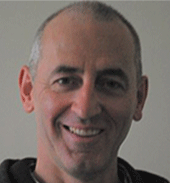Self Identification
Author: Angela Wheeler, New Zealand Teacher
When you identify yourself to others, where do you point? Most would say the center of their chest. Why here? What’s the significance of this place? Some would say the heart resides here; but then why don’t we point slightly down and to the left a bit? Others would say it’s the heart charkra area, yet others, the seat of the soul. Interestingly, it’s the thymus which lies in the mediastinum, directly at the center of the chest where people point to indicate themselves. The word thymus comes from the Latin derivation of the Greek word thymos. This means ‘watery excrescence’ as well as ‘soul’ or ‘spirit’ ; hence the ancient greeks considered the thymus as the center of the soul.
The role of the thymus is to identify self from non-self; self identification. In the newborn, it is massive (averaging 15grams) in comparison to it’s relative size in an adult. It continues to grow until the onset of puberty, thereafter, diminishing in size in healthy adults. It makes sense that it is so large in the newborn, as the entire world is new and what is ‘self’ and what is ‘other’ is a process, not only of physiological development, but also of psychological maturity. So as we grow, discover the world and ourselves within it, the thymus is the organ we use to make this distinction. It could be said that as we grow into old age, we know more of ourselves (physically, emotionally and psychologically) and of our environment, so the need for this organ reduces, in both it’s size and function.
The thymus is a center for balancing the immune system by making sure the body doesn’t turn on itself (as in autoimmune diseases such as Rheumatoid arthritis, Lupus, Type 1 diabetes, MS and muscular dystrophy, etc). It produces two types of white blood cells (lymphocytes). One type is responsible for recognising foreign substances as well as the multiple ways in which the body attacks the substances. The other group of lymphocytes is responsible for producing antibodies. As time goes by, our personal library of antibody arsenal increases, and fewer ‘new, foreign’ things come along to stimulate our immune system. By and large, the thymus gradually becomes redundant.
So... what happens in autoimmune diseases? Interestingly, many result in an enlarging of the thymus. This was made very obvious to me during a recent BCST session with a middle aged Rheumatoid Arthritis (RA) client. Apart from liver and spleen imbalances and a highly metallic feel to her blood, her thymus was large and somehow ‘out of sorts’. The thymus does temporarily enlarge with certain chemicals such as immunosuppressant drugs and chemotherapy. On talking about the metallic quality in her blood, the client noted she’d had her amalgam fillings replaced in two appointments (4 weeks and 2 days ago respectively). Her blood test 2 years prior, had found high mercury levels. That accounted for the highly metal sense in the blood (not an unusual sense in itself, but at this level, with its relationship to the liver and the spleen, it was telling me a different story). It may have also been causative agent in the thymus enlargement, but I strongly suspect the enlargement was more to do with her RA. Another interesting point was that she reported after her last session, she was beginning to put herself first, something she had not done much in her life.
On filing through a number of research papers, the correlation between thymus function and autoimmune diseases in adults is noticeable, but not with children diagnosed of conditions such as Juvenile Idiopathic Arthritis (JIA), which is an autoimmune disease. The children with JIA had normal thymus function and size. This suggests that there is something else happening in the adult which either predisposes the individual to autoimmune diseases which then affects the thymus function, or that impaired thymus function increases the individual’s susceptibility to autoimmune disease. This is an intriguing question from an aetiological view point. From a holistic approach, the interplay of the systems of the body are so entwined that what is needed is not so much, ‘what caused what’, but ‘how does one system inter-relate to another and how can balance be restored’. This is where CST can come into its own. Awareness of the autonomic tensions of the sympathetics to parasympathetics, the interplay of different organs and glands, life experience holdings within the body and the tone/emotional play within allows the system to shed light on whole body patterns so clarity comes out of the confusion.





 Ged Sumner
Ged Sumner